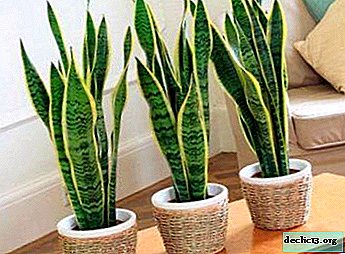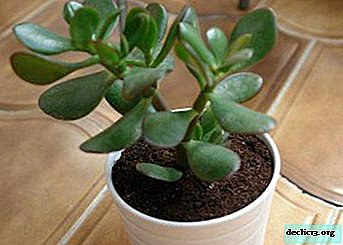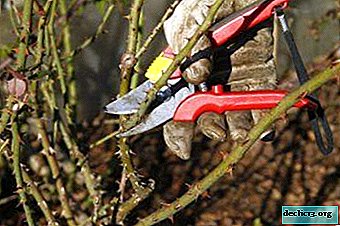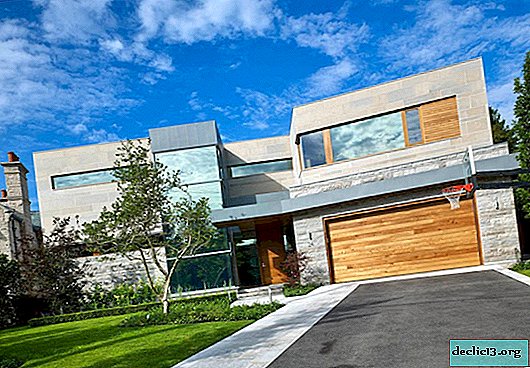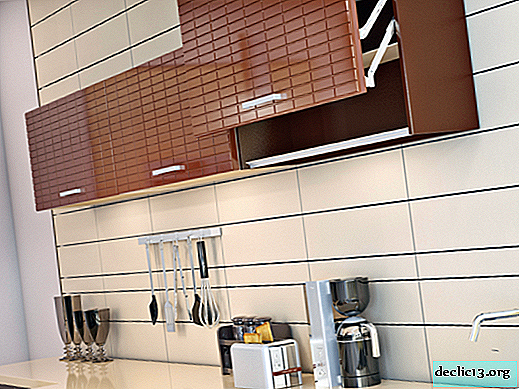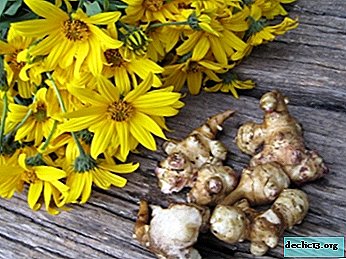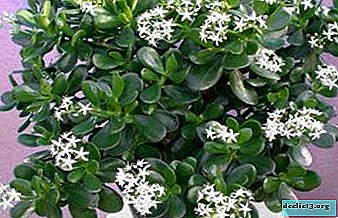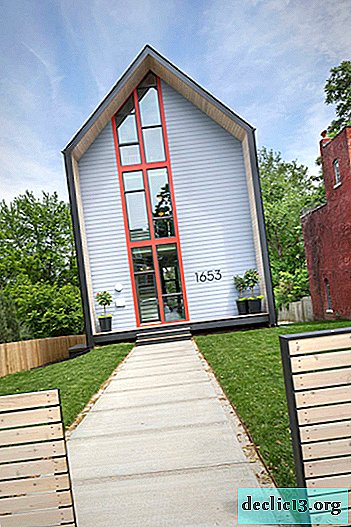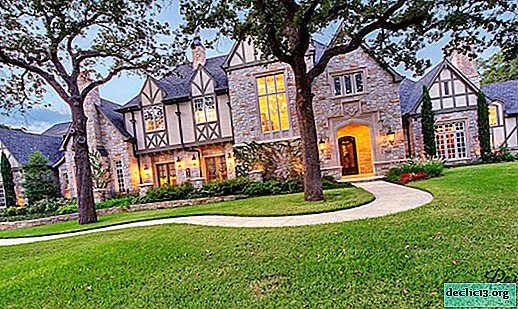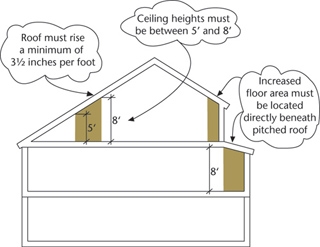We know when, how many times a year, and how the Decembrists bloom at home.
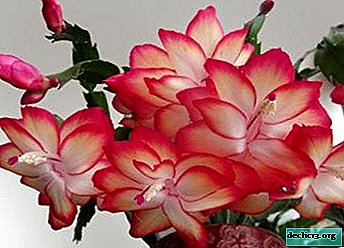 Schlumbergera (Schlumbergera lat.) - A plant that belongs to the genus of epiphytic cacti. It grows in nature in the tropics, but it can be found there only on tree branches. Brought to Europe in 1816. Since that time, plant breeders began to acquire it more and more often to decorate their homes with an exotic plant.
Schlumbergera (Schlumbergera lat.) - A plant that belongs to the genus of epiphytic cacti. It grows in nature in the tropics, but it can be found there only on tree branches. Brought to Europe in 1816. Since that time, plant breeders began to acquire it more and more often to decorate their homes with an exotic plant.
Outwardly, it is a bush with stems branched to the sides with a length of 27 to 39 cm. The stalk itself has an interesting structure. It consists of individual leaflets-segments with small protrusions on the sides, but all this has a holistic structure that forms the stalk. Schlumbergera has other names in the people, such as: zygocactus, Decembrist, Christmas tree or crab.
When should bloom at home?
Decembrist is a plant common in South America, where the tropical continental seasonally humid climate. Therefore, the flowering of this cactus directly depends on the tropical season.In native conditions, the Decembrist begins to bloom from mid-October to mid-March.. This happens after it is saturated with enough moisture in the "rainy season".
 In our latitudes, such climatic features for Schlumbergera are absent, but in the summer, home plants are watered more often, this is perceived by the plant as the tropical “Rainy Season” that has come, after which it is actively preparing for flowering.
In our latitudes, such climatic features for Schlumbergera are absent, but in the summer, home plants are watered more often, this is perceived by the plant as the tropical “Rainy Season” that has come, after which it is actively preparing for flowering.
The time for flowering Schlumberger chooses, depending on weather conditions. If April was hot, and it was necessary to water the plant more often, then this means earlier flowering of the Decembrist, i.e. in late November - early December.
If the summer began late, then do not be surprised that the Decembrist bloomed later - in January or February.
How many times a year does this happen?
How often can it be observed blooming? For one calendar year, a Christmas tree can bloom only once. For 12 months, it goes through four stages of its growth and development, which indicates a long preparation for flowering.
Schlumbergera development periods:
- Vegetation.
- Peace (at this time there is preparation for the release of buds and their formation).
- Bloom.
- Peace (completion of flowering and restoration).
Schlumbergera in its development during the year goes through several periods that must be taken into account to achieve success in growing this plant.
We consider in detail each period:
- The Vegetation Period March - September, the plant gains strength, grows and increases the supply of necessary and useful substances for it, releases additional segments. At such a time, the best place for its growth will be an open room, close to growth in the natural environment - it can be a terrace or balcony.
The Decembrist loves a large amount of light, but not direct sunlight. The best option would be a sparse shadow of higher plants.
During this period, the plant should be sprayed with warm water and watered as the soil dries. The most suitable temperature for Schlumbergera during the growing season will be + 21-24 Celsius.
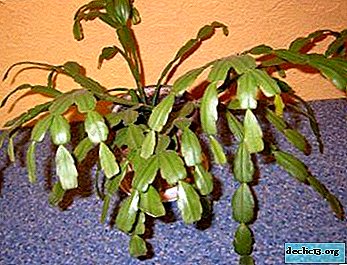 The period of peace - this is September - October. The formation of buds for flowers begins. Watering during this period should be reduced and provide a cooler and fresher air, about 11-19C heat. The signal for watering will be slightly wrinkled leaves. It is better to replace water with weak tea leaves.
The period of peace - this is September - October. The formation of buds for flowers begins. Watering during this period should be reduced and provide a cooler and fresher air, about 11-19C heat. The signal for watering will be slightly wrinkled leaves. It is better to replace water with weak tea leaves.If until November no approaching frosts are observed, then the Schlumberger can not be moved from an open place to the room. The plant is not afraid of temporary, short-term temperature drops to 4-6C heat. During watering, monitor the amount of fluid entering the plant! Decembrists tend to rot the root system. Transfusion can lead to the death of the plant.
- Flowering Period starts in November and ends in January or February. At this time of the year, the flower should be placed indoors, in the place where it was earlier, before being transferred to the street. During the flowering period, it is advisable to apply potassium-phosphorus top dressing and pour infusion of water on the eggshell, as well as to fertilize with a calcium nitrate solution.
Decembrists blooms at an air temperature of 16-21 Celsius. Throughout the flowering period, it is recommended to exclude contact with the plant, i.e. Do not rearrange it, do not toss or turn it.
- The period of peace or recovery from February to March. The field as the Decembrist faded, it was time for its formation. It is necessary to unscrew the tops of the segments on the shoots, thereby stimulating the process of branching and giving the bush a bush.
In the fourth development period, the Schlumberger needs to be watered only at the moment when the top layer of her mail has dried out. BUT! In no case should drying be allowed, as well as overflow.
How does this happen?
How does a Christmas tree blossom? Defining this is easy. At the end of each branch, it will be possible to observe the appearance of buds. Next, zygomorphic flowers with a pronounced tube will bloom from them. Inflorescences in their form are very similar to orchids.
In the natural environment, the color of Schlumbergera is often white and red. Varieties of the Decembrist of other colors were bred by selection.Actions after flowering
 When the flowering period comes to its end, then, like all other plants, the inflorescences begin to dry and fall off - this is a natural process. The frequency of watering during the flowering period of the Decembrist should be reduced.
When the flowering period comes to its end, then, like all other plants, the inflorescences begin to dry and fall off - this is a natural process. The frequency of watering during the flowering period of the Decembrist should be reduced.
Upon completion of flowering, Schlumbergera should have access to fresh and cool air. There comes a period when the botanist needs to remove the upper segment of the stem and make top dressing for the flower. Removing the upper part of the stem contributes to the formation of splendor of the plant.
After flowering, the Decembrist is watered and sprayed from the spray bottle only with warm boiled water.
Why do buds fall?
Reasons for the Decembrist's Buds to Fall:
- Improper plant care is the main cause of bud dropping. From the moment the Christmas tree was moved from the street to the room, it is not recommended to change its location or rotate it, since it is already in the process of forming buds.
- The reason for the dumping of buds may be improper watering and the plant being in a draft during preparation for flowering.
Reasons why it may not bloom
A common problem with home botanists who grow Schlumbergera is improper plant care. Zygocactus will not bloom if:
- not provide him with decent natural light;
- inappropriate growth area (the pot should be medium in size, so as not to allow excessive development of the root system);
- soil is not peculiar to this type of plant;
- there is no additional feeding of the flower.
Read more about why zygocactus does not bloom at home and how to fix it, read here, and from this article you will learn about how seasonality affects the plant, as well as how to make the flower grow and give abundant buds.
Care Features
 For the Decembrist to bloom, it is necessary:
For the Decembrist to bloom, it is necessary:
- On autumn days, let the plant "rest", do not move it from place to place without urgent need, do not touch it with wet sponges or rags, spray it with warm water.
- Provide the flower with the proper air temperature up to 16C heat, otherwise, at a higher temperature, it will continue to strengthen its stem, and not prepare for the release of buds.
Schlumbergera is a very harmonious and unpretentious plant. Having acquired a Decembrist in your home, you will not feel the difficulties in its cultivation. Observing several basic rules, he will delight with his beautiful inflorescences all winter and, thereby, create coziness. That will bring a lot of positive emotions and a sense of aesthetic satisfaction to those living in the house.
Useful video
We offer you to watch a video on how to achieve Decembrist flowering at home:

 The period of peace - this is September - October. The formation of buds for flowers begins. Watering during this period should be reduced and provide a cooler and fresher air, about 11-19C heat. The signal for watering will be slightly wrinkled leaves. It is better to replace water with weak tea leaves.
The period of peace - this is September - October. The formation of buds for flowers begins. Watering during this period should be reduced and provide a cooler and fresher air, about 11-19C heat. The signal for watering will be slightly wrinkled leaves. It is better to replace water with weak tea leaves.